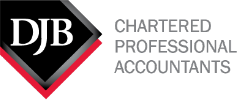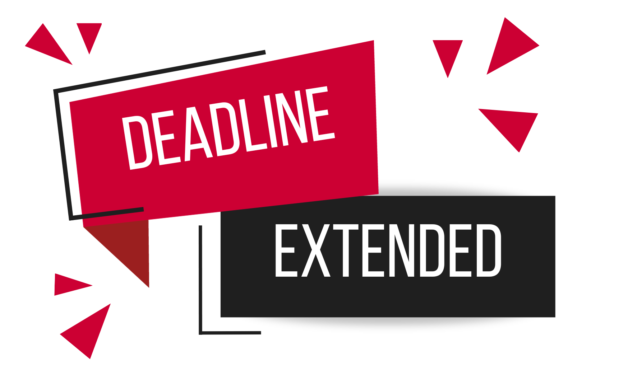Executive summary
On Nov. 21, 2023, the Minister of Finance, Chrystia Freeland, released Canada’s 2023 Fall Economic Statement (2023 Economic Statement). The Economic Statement introduces several new tax measures which focus on Canada’s plan for affordable housing and building a strong economy in the form of clean energy credits and addressing international tax gaps.
The Economic Statement also affirms the government’s intention to proceed with previously announced tax measures, including by providing clarifications to certain priority economic areas.
Economic statement 2023
Business tax measures
Clean hydrogen investment tax credit
The 2023 Economic Statement provides further details on the clean hydrogen investment tax credit (Clean Hydrogen ITC), originally proposed in the 2023 Federal Budget (Budget 2023), outlines key design elements of the credit, including eligible projects, credit rates and carbon intensity measurement. The federal government plans to continue reviewing low-carbon hydrogen production pathways leading up to Budget 2024.
Budget 2023 highlighted that the Clean Hydrogen ITC would provide support for clean ammonia production, offering a 15% credit rate with specific conditions. The 2023 Economic Statement extends eligibility of the credit to property converting clean hydrogen into ammonia, subject to sufficient production capacity, transportation feasibility and hydrogen sourcing criteria. The 2023 Economic Statement also addresses the conditions necessary for the inclusion of power purchase agreements and similar instruments for calculating project’s carbon intensity (CI). Eligibility is contingent on sourcing electricity from hydro-, solar- or wind-powered generation that:
- first commenced production on or after March 28, 2023, and no more than one year before the initial CI assessment; and,
- is located in the same province or territory and connected to the electricity grid of that province or territory.
The Clean Hydrogen ITC’s positive environmental impact aligns with the federal sustainable development strategy, aiming to reduce greenhouse gas emissions by 40% to 45% below 2005 levels by 2030 and achieve net-zero emissions by 2050.
Clean Technology and Clean Electricity Investment Tax Credits
The 2022 Fall Economic Statement introduced a 30% refundable clean technology investment tax credit for eligible taxpayers investing in clean technology property between March 28, 2023 and 2035, subject to a phase out in 2034. Budget 2023 added a 15% refundable clean electricity investment tax credit for eligible property starting from Budget 2024 until 2034.
Notably, the 2023 Economic Statement extends the eligibility of these tax credits to encompass systems that support the generation of electricity, heat or a combination thereof, from waste biomass.
The expanded eligibility for the clean technology investment tax credit applies to property acquired on or after the day of the 2023 Economic Statement, as long as it has not been used before acquisition. For the clean electricity investment tax credit, eligibility starts from the Budget 2024 release date and extends to projects that have not commenced construction before March 28, 2023.
Exception on dividend received deduction by financial institutions
In Budget 2023, the government proposed to disallow financial institutions from claiming a deduction for dividends received on shares of other corporations resident in Canada where those shares are mark-to-market property. This measure is intended to better calculate the income of financial institutions from securities consistent with the purpose of the mark-to-market property rules.
The 2023 Economic Statement offers relief from the above amendments by allowing financial institutions to continue to claim the deduction on dividends received on “taxable preferred shares”. Financial institutions will need to review their holdings to fully understand the tax impact of losing this deduction on securities that do not qualify for the exemption.
These changes are proposed to apply to dividends received on or after Jan. 1, 2024.
Supporting the adoption of employee ownership trusts
First introduced in Budget 2022, employee ownership trusts (EOTs) serve as a mechanism to allow employees to purchase a business without requiring them to pay directly to acquire the shares of the business. EOTs also serve as a valuable option for owners planning business succession.
To further incentivize the use of EOTs, the 2023 Economic Statement expands on the proposals contained in Budget 2023. The government proposes to exempt the first $10 million in capital gains realized from the sale of a business to an EOT from taxation. This incentive will apply to the 2024 to 2026 tax years. Details on the exemption will be provided at a future date.
Concessional loans
When a taxpayer receives government assistance in the course of earning income from business or property, the amount of assistance may reduce the amount of related expenses, property costs or may result in a potential inclusion in the taxpayer’s overall income.
Historically, non-forgivable and concessional loans from public authorities were not considered government assistance, until a pivotal 2021 decision by the Tax Court of Canada. This ruling, upheld in 2022 by the Federal Court of Appeal, changed the treatment of concessional loans, considering their full principal amount as government assistance.
Addressing this shift, the 2023 Economic Statement proposes a crucial amendment to the Income Tax Act. The proposed change aims to exclude bona fide concessional loans with reasonable repayment terms from public authorities as government assistance. If enacted, this amendment will take effect on the day of the 2023 Economic Statement, signaling a swift government response to evolving tax law.
International tax measures
Underused Housing Tax
The Underused Housing Tax Act (UHTA) requires affected owners of residential property in Canada to file an annual return starting for the 2022 calendar year. Where the residential property is considered vacant or underused, the owner is required to pay an annual federal 1% tax. The implementation of the UHTA has caused significant confusion and most recently necessitated a second administrative extension to the filing and payment deadline regarding the 2022 calendar year. In particular, if affected owners file their returns and pay the underused housing tax for the 2022 calendar year by April 30, 2024 (previously extended to Oct. 31, 2023), the CRA will waive all penalties and interest otherwise applicable.
In light of feedback received on the UHTA, the 2023 Economic Statement proposes several amendments to the legislation. The UHTA was originally positioned in Budget 2021 as a tax on property owned by non-Canadian individuals and entities. Despite this intention, certain Canadian owners of residential property were also required to file returns and potentially pay tax. The amendments proposed in the 2023 Economic Statement will bring the UHTA closer in line with its original objective by expanding the definition of “excluded owner”. Excluded owners are not required to file a UHTA return or pay tax on their property. “Specified Canadian corporations”, partners of “specified Canadian partnerships” and trustees of “specified Canadian trusts” will now be considered excluded owners. The definitions of “specified Canadian partnership” and “specified Canadian trust” will also be expanded. These changes will apply for 2023 and subsequent calendar years.
The other proposed changes to the UHTA are:
- Decreasing the minimum failure to file penalty from $5,000 for individuals and $10,000 for corporations to $1,000 and $2,000, respectively, for 2022 onwards;
- Introducing an exception for residential properties held as a place of residence or lodging for employees in rural areas for 2023 onwards; and,
- Exempting unitized (“condominiumized”) apartment buildings from the definition of “residential property” for 2022 onward, and limiting the “vacation property” exemption to only one residential property for a calendar year for 2024 onward, in addition to other technical changes alluded to but not described.
Canada’s intention to proceed with implementing global minimum tax
The 2023 Economic Statement reiterates Canada’s commitment to international efforts to reform corporate taxation, particularly through the implementation of the OECD/G20 Inclusive Framework on Base Erosion and Profit Shifting (BEPS) Pillar Two, aimed at establishing a global minimum tax rate.
Canada intends to enact the Global Minimum Tax Act (GMTA) to implement Pillar Two of the inclusive framework, with an effective date after Dec. 31, 2023. Pillar Two (and the GMTA by extension) would establish a global minimum tax rate of 15% on the profits of large multinational corporations, regardless of where they maintain tax residency. Tax revenue is projected to exceed $3.1 billion by fiscal year 2029 from the Pillar Two international tax reform.
The 2023 Economic Statement also includes an exemption from the application of the GMTA for income from shipping companies to align with global treatment.
Indirect tax measures
Removing GST from new co-op rental housing
The federal government proposed on Sept. 14, 2023 to remove the goods and services tax (GST) from new purpose-built rental housing construction projects to incentivize the rapid construction of new homes. The federal government has also called on provinces to remove provincial sales taxes on rental property construction. Consistent with the federal government, Ontario plans to offer full HST rebates for long-term rental units, as previously announced in the 2023 Ontario Fall Economic Statement.
In the 2023 Economic Statement, co-operative housing corporations that provide long-term rental accommodation will also be eligible to benefit from the GST exemption, subject to additional conditions. The exemption will not apply to substantial renovations of existing residential properties to prevent the displacement of existing renters.
The GST exemption will apply to construction projects that are initiated between Sept. 14, 2023, and Dec. 31, 2030, and fully completed before 2036.
Other tax measures
Non-compliant short-term rentals
The Economic Statement outlines the federal government’s proactive measures to address the growing issue of non-compliant short-term rentals in major Canadian cities like Montréal, Toronto and Vancouver.
The federal government plans to deny income tax deductions for expenses related to earning short-term rental income, including interest expenses, in provinces and municipalities that have prohibited such rentals. This denial of deductions is also extended to cases where short-term rental operators are non-compliant with provincial or municipal licensing, permitting or registration requirements. These measures are set to take effect from Jan. 1, 2024.
Intention to proceed with previously announced measures
Subject to amendments resulting from public consultations and legislative processes, the government intends to proceed with previously announced tax measures. These measures include, but are not limited to:
- The introduction of:
- Hybrid mismatch arrangements rules;
- Excessive interest and financing expenses limitations (EIFEL) regime and;
- Substantive Canadian-controlled private corporations.
- Amendments to:
- Alternative minimum tax for high-income individuals;
- Intergenerational business transfers;
- General anti-avoidance rule and;
- Information requirements for claiming input tax credits for GST/HST purposes, back from the 2021 Federal Budget.
As some of these measures are slated to come into effect in 2024, middle market companies should consider proactive changes to ensure readiness for these new measures.
This article was written by Clara Pham, Daniel Mahne, Farryn Cohn, Sigita Bersenas, Cassandra Knapman, Olukayode Akinbosede, Elizabeth Ojesekhoba and originally appeared on 2023-11-21. Reprinted with permission from RSM Canada LLP.
© 2024 RSM Canada LLP. All rights reserved. https://rsmcanada.com/insights/tax-alerts/2023/federal-economic-statement-2023.html
RSM Canada LLP is a limited liability partnership that provides public accounting services and is the Canadian member firm of RSM International, a global network of independent assurance, tax and consulting firms. RSM Canada Consulting LP is a limited partnership that provides consulting services and is an affiliate of RSM US LLP, a member firm of RSM International. The member firms of RSM International collaborate to provide services to global clients but are separate and distinct legal entities that cannot obligate each other. Each member firm is responsible only for its own acts and omissions, and not those of any other party. Visit rsmcanada.com/about for more information regarding RSM Canada and RSM International.
The information contained herein is general in nature and based on authorities that are subject to change. RSM Canada LLP guarantees neither the accuracy nor completeness of any information and is not responsible for any errors or omissions, or for results obtained by others as a result of reliance upon such information. RSM Canada LLP assumes no obligation to inform the reader of any changes in tax laws or other factors that could affect information contained herein. This publication does not, and is not intended to, provide legal, tax or accounting advice, and readers should consult their tax advisors concerning the application of tax laws to their particular situations. This analysis is not tax advice and is not intended or written to be used, and cannot be used, for purposes of avoiding tax penalties that may be imposed on any taxpayer.










